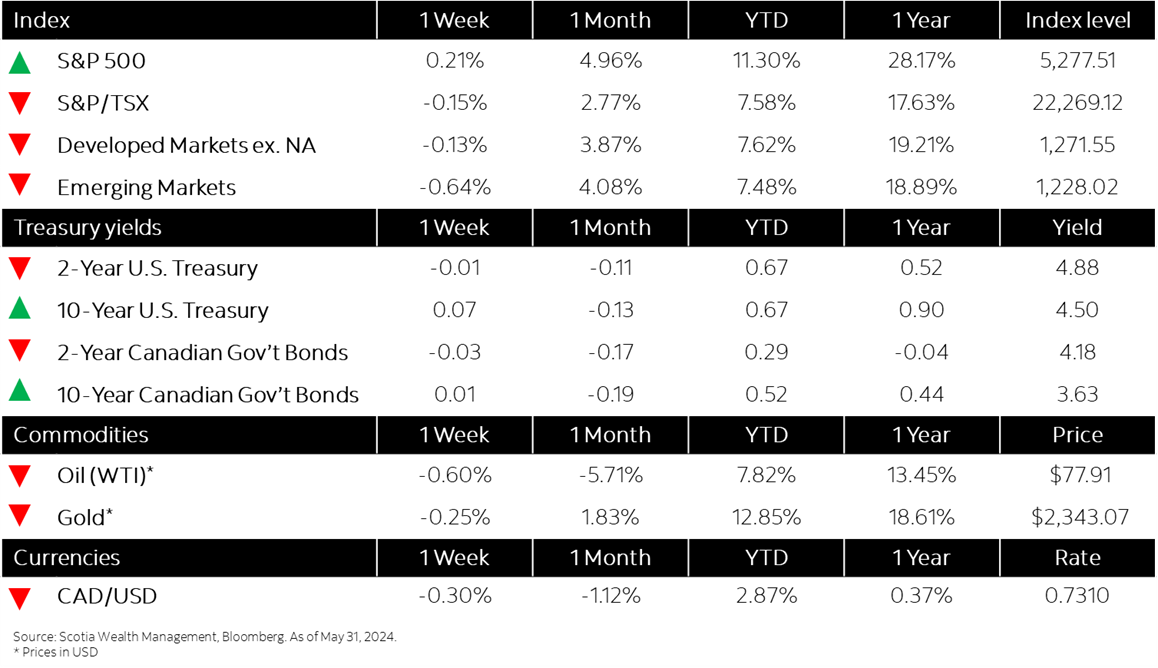
Market Watch: May 31
This week’s highlights
- Equity markets give up some gains despite steady U.S. inflation
- Sovereign bonds move higher following U.S. PCE reading
- Canadian economy misses first-quarter growth forecast; April GDP likely up 0.3%
- U.S. economic growth revised lower for first quarter
- IMF raises China economic growth forecasts
- In the news: Major energy companies forge strategic alliances through consolidation
Week in review
Equity markets give up some gains despite steady U.S. inflation



